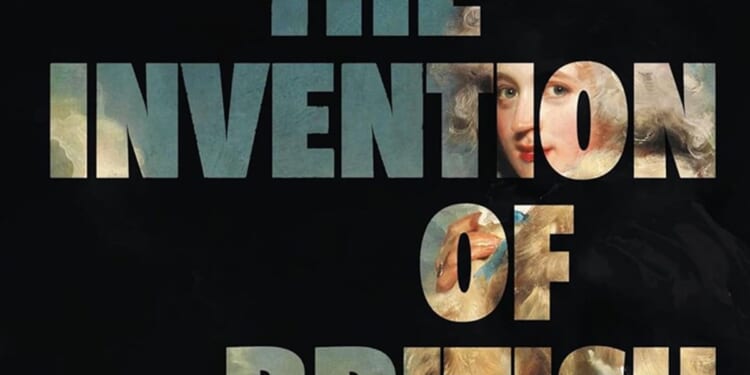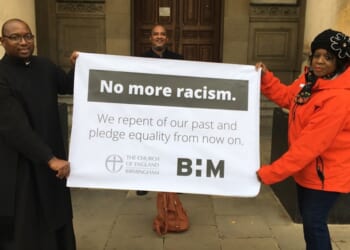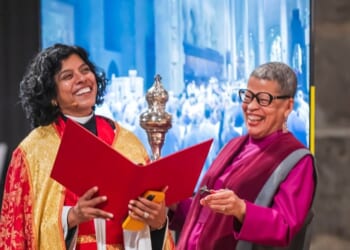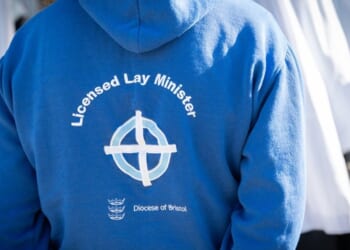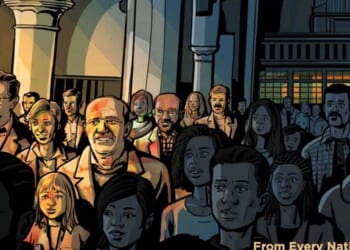ART historians often begin telling the story of British art post-Reformation, as the iconoclasms resulting from the dissolution of the monasteries and the later “Glorious Revolution” swept away much earlier art and diverted the stream of religious art away from the Church into other channels.
In this book, Bendor Grosvenor challenges that narrative, beginning his story of the invention of British art in 10,000 BC, and continuing to the creation of a distinctively British landscape art that was also influential internationally.
Despite the vast periods of time covered, and the diversity of themes and styles explored, his approach enables several key themes to be recognised. He begins, for example, with the horse (The Cresswell Horse) and the sun (cup and ring marks, Roughting Linn) before reaching a conclusion that includes the equine paintings of George Stubbs, and the sun-drenched semi-abstracts of the late J. M. W. Turner.
In between are many twists, turns, and full stops in the invention of British art caused by a combination of invasions, iconoclasms, and the fads and fashions of the commissioning classes. Grosvenor navigates this complex story with admirable clarity and insight.
Among the most interesting of many reinterpretations of artworks and artists are his identification of the Civil War as a culture war (between the visual culture of Roman Catholicism and the word-based culture of Protestantism), along with his recognition that the paintings of Joseph Wright of Derby depict the harmony achieved in that period between science and religion rather than the beginnings of a separation between the two, as interpretation of Wright’s images has often assumed.
The influence of invasions and the preferences of the commissioning classes (for much of this story, monarchs and nobles) resulted in the arrival of artists and styles from elsewhere in Europe.
The first great portrait artists in this story were the German-Swiss Hans Holbein the Younger, and the Flemish Antony van Dyck. Responding to the fondness, noted in 1755 by the miniaturist Jean André Rouquet, that the English have for having their pictures drawn, these two established the basis for a tradition of portraiture that nurtured the likes of Thomas Gainsborough and Thomas Lawrence.
Such strands return Grosvenor regularly to the question whether British art is art made in Britain or art made by British artists. Ultimately, he concludes, “it is the very foreignness of British art that makes it distinctly British”.
Grosvenor rightly pays significant attention to the influence of religion (principally Christianity), for good and ill, throughout the telling of his story. The first point at which he identifies a “British” art, one which both accommodates international artists and styles to create a new type of art which spread across Europe, is with the creation of the Insular style through the production of religious books in Northumbria.
He ends in a similar place, with the wider influence of John Constable’s landscapes on the development of an art focused on landscape and rural life. As he does so, he notes the religious aspect of Constable’s art, in particular the religious sublime.
One significant omission is any mention of William Blake and his circle, from which distinctively British forms of Visionary, Symbolic, and Fantasy art derive. Blake’s work also represents the fullest revival of that first “British” art, the Northumbrian illuminated manuscripts. Inevitably, in such a wide-ranging survey some omissions occur, but, with this book, Grosvenor has given many new perspectives and insights into the development of British art.
The Revd Jonathan Evens is the Team Rector of Wickford and Runwell in the diocese of Chelmsford.
The Invention of British Art
Bendor Grosvenor
Elliott & Thompson £40
(978-1-78396-809-1)
Church Times Bookshop £36

